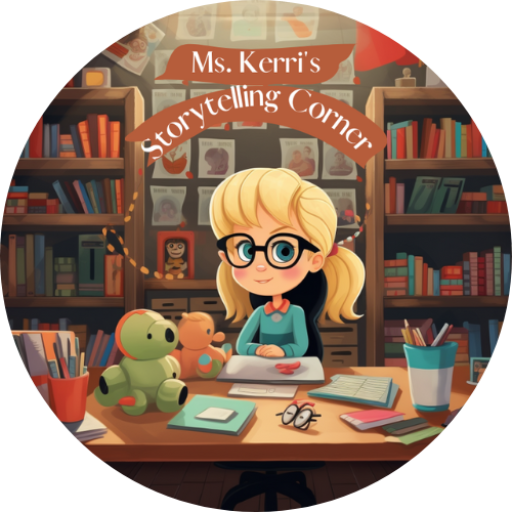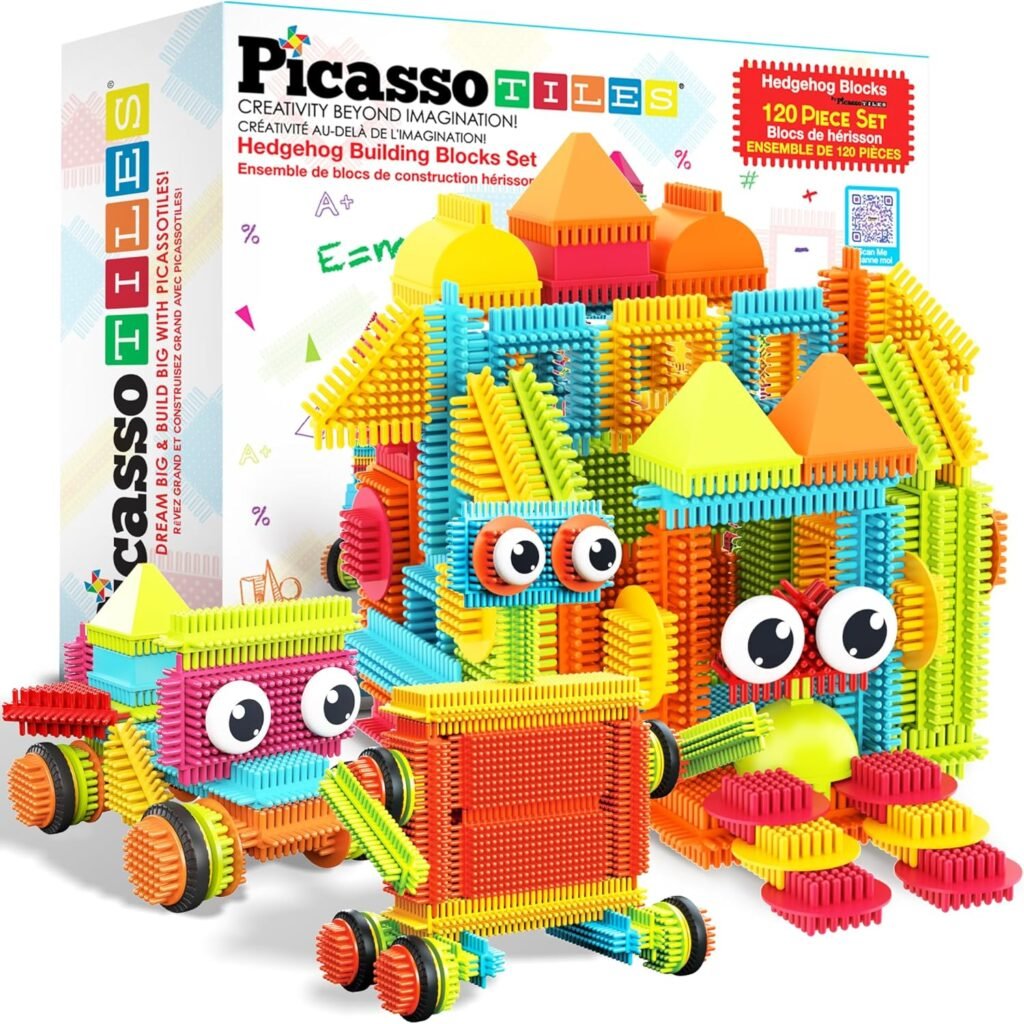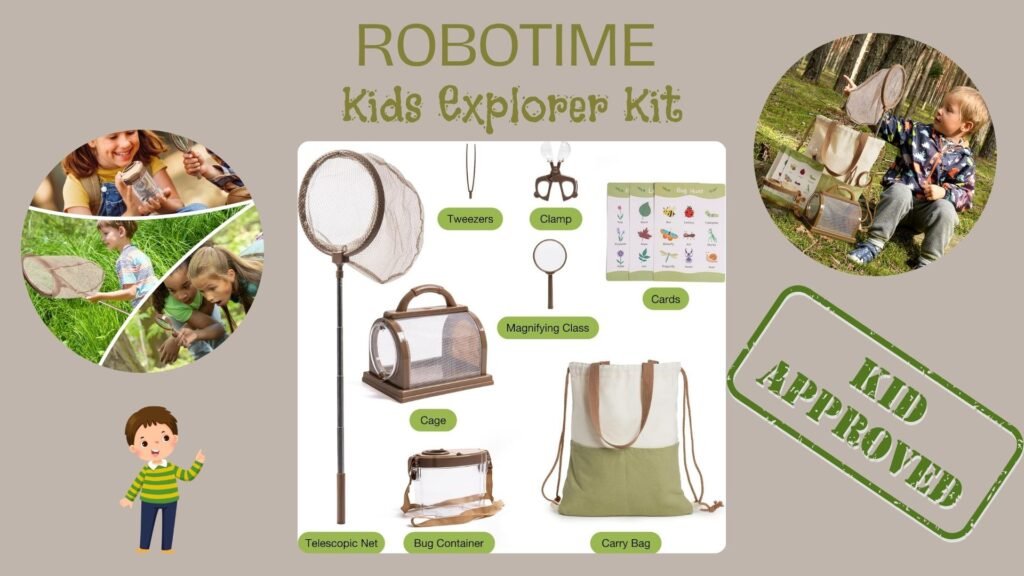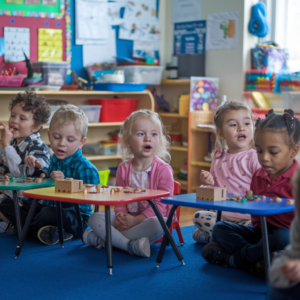Visual learning is an effective way for preschoolers to absorb information and develop essential skills. By focusing on engaging activities that capture their attention, parents and educators can enhance children’s learning experiences. This article presents various hacks that utilize visual methods to support preschoolers in their educational journey.
Key Takeaways
- Reading pictures is as important as reading words; engage children by discussing illustrations.
- Art activities, like drawing and crafting, help improve visual skills and creativity.
- Use everyday objects to create fun learning games, such as ‘I Spy’ to boost observation skills.
- Incorporating technology with educational apps and videos can enhance visual learning.
- Outdoor activities like nature walks encourage children to observe and appreciate their surroundings.
Engaging Picture Books for Visual Learning
Reading Beyond Words
Reading picture books is not just about the text; it’s about the images too. Encourage children to explore the illustrations, asking them questions like, “What do you think is happening here?” This helps them connect the story with the visuals. Classic titles like “Where the Wild Things Are” and “The Snowy Day” are perfect for this.
Discussing Illustrations
When reading, take time to discuss the illustrations. Ask your child to describe what they see. This can include:
- The colors used
- The emotions of the characters
- The actions taking place
This practice enhances their ability to interpret visual information and builds their vocabulary.
Interactive Storytelling
Make storytime interactive! Use props or act out scenes from the book. This not only makes reading fun but also helps children visualize the story better. You can even create a simple table to track their favorite books and characters:
| Book Title | Favorite Character | Why They Like Them |
|---|---|---|
| Where the Wild Things Are | Max | He’s adventurous! |
| The Snowy Day | Peter | I love snow! |
| Corduroy | Corduroy | He’s a teddy bear! |
Engaging with picture books can significantly boost a child’s visual literacy. By focusing on both the text and illustrations, you help them develop a richer understanding of stories and the world around them.
Creative Art Activities to Boost Visual Skills
Exploring Different Art Mediums
Introducing preschoolers to various art materials can significantly enhance their visual skills. Here are some mediums to explore:
- Watercolors: Great for blending colors and creating soft textures.
- Crayons: Perfect for developing grip and control.
- Clay: Encourages three-dimensional thinking and tactile exploration.
Drawing and Coloring Exercises
Engaging in drawing and coloring can help children express their creativity while improving their observation skills. Encourage them to draw what they see. Here are some fun exercises:
- Nature Sketching: Take a walk and have them draw plants or animals they see.
- Coloring Books: Use themed coloring books to teach about colors and shapes.
- Story Illustrations: After reading a story, ask them to illustrate their favorite scene.
Crafting with Everyday Materials
Using items from around the house can spark creativity and resourcefulness. Here are some ideas:
- Recycled Materials: Create sculptures or collages from boxes, bottles, and paper.
- Nature Crafts: Use leaves, twigs, and stones to make art.
- Fabric Scraps: Encourage sewing or gluing fabric pieces together for unique creations.
Creative activities for preschooler learning and development are essential. Let your child lead creative play and encourage them with praise.
By incorporating these activities, you can help your child develop essential visual skills while having fun!
Using Everyday Objects for Visual Learning
Playing ‘I Spy’ Games
Playing ‘I Spy’ is a fun way to enhance your child’s observation skills. This game encourages them to notice colors, shapes, and sizes in their environment. Here are some ideas to make it engaging:
- Choose a color or shape and ask your child to find objects that match.
- Take turns being the one who spies something, allowing them to lead the game.
- Use descriptive language to help them articulate what they see.
Sorting and Matching Activities
Sorting and matching activities can be both educational and entertaining. These activities help develop critical thinking skills. Here are some simple ways to implement this:
- Gather everyday items like buttons, toys, or blocks.
- Ask your child to sort them by color, size, or shape.
- Create matching games using pairs of items, like socks or cards.
Building with Blocks and Shapes
Building with blocks and shapes is a fantastic way to boost spatial awareness. Encourage your child to:
- Create structures using different shapes and sizes.
- Discuss the properties of the shapes they are using, such as how many sides they have.
- Experiment with balance and stability by building taller structures.
Engaging in these activities not only fosters creativity but also enhances problem-solving skills.
By incorporating everyday objects into learning, you can create a rich environment that promotes visual skills and keeps your preschooler engaged!
Incorporating Technology in Visual Learning
Educational Apps and Games
Using technology can make learning fun and engaging for preschoolers. Educational apps designed for young children can enhance their visual skills through interactive games. Here are some popular options:
- Endless Alphabet: Teaches vocabulary with fun animations.
- Starfall: Focuses on reading and phonics with colorful visuals.
- Toca Boca: Offers various games that encourage creativity and exploration.
Interactive Videos and Tutorials
Videos can be a powerful tool for visual learners. They provide a dynamic way to present information. Interactive videos allow children to engage with the content actively. Consider these:
- PBS Kids: Offers educational shows that promote learning through storytelling.
- YouTube Kids: Features a variety of educational channels tailored for preschoolers.
- Khan Academy Kids: Provides lessons in math, reading, and more with engaging visuals.
Digital Drawing and Coloring Tools
Digital tools can help children express their creativity while developing their visual skills. Drawing apps allow kids to create art without the mess. Some recommended tools include:
- Crayola Color Studio: A fun app for coloring and drawing.
- Drawing Pad: Offers various tools for digital art creation.
- Artie 3000: A robot that teaches coding through drawing.
Incorporating technology in learning not only makes it enjoyable but also strengthens children’s visual literacy. When children engage with STEM concepts, their visual literacy and understanding of scientific ideas improve significantly.
Outdoor Activities to Enhance Visual Observation
Nature Walks and Scavenger Hunts
Taking your preschooler on nature walks can be a fun way to enhance their visual observation skills. Create a list of natural items for them to find, such as leaves, rocks, and flowers. This encourages them to look closely at their surroundings and notice details they might otherwise miss.
Observing and Drawing Plants and Animals
After a nature walk, encourage your child to draw what they saw. This activity not only boosts their observation skills but also helps them express their creativity. Ask them to focus on colors, shapes, and textures, which can deepen their understanding of the natural world.
Exploring Colors and Shapes in Nature
Use the outdoors as a classroom by pointing out different colors and shapes in nature. You can create a simple chart to track what you find:
| Color | Shape | Example Item |
|---|---|---|
| Green | Round | Leaf |
| Brown | Irregular | Rock |
| Yellow | Long | Flower Stem |
This activity helps children connect visual elements with real-world objects, enhancing their learning experience.
Music and Movement for Visual Learners
Dance and Movement Activities
Engaging preschoolers in dance and movement activities can significantly enhance their visual learning. These activities help children connect movement with music, making learning fun and memorable. Here are some ideas:
- Follow the Leader: Kids mimic movements, enhancing their observation skills.
- Freeze Dance: When the music stops, children freeze in place, encouraging them to pay attention to their surroundings.
- Movement Stories: Create stories where children act out different characters, boosting their imagination and visual skills.
Using Visual Cues in Songs
Incorporating visual cues in songs can make learning more effective. For example:
- Use hand signals to represent different actions in a song.
- Create simple dance moves that correspond to lyrics.
- Use colorful props to illustrate concepts in the song, making it easier for children to remember.
Creating Visual Rhythms with Instruments
Using instruments can also enhance visual learning. Here’s how:
- Color-Coded Instruments: Assign colors to different instruments, helping children associate colors with sounds.
- Rhythm Patterns: Create simple patterns for children to follow visually, improving their ability to recognize sequences.
- Group Performances: Encourage teamwork by having children perform together, fostering social skills and visual coordination.
Engaging in music and movement activities not only makes learning enjoyable but also helps develop essential visual skills in preschoolers. The top music and movement activities for preschoolers can create a rich learning environment that supports their growth.
Practical Tips for Parents and Educators
Setting Up a Visual Learning Environment
Creating a space that encourages visual learning is essential. Here are some tips:
- Use bright colors to stimulate interest.
- Display educational posters and charts.
- Organize materials in clear bins for easy access.
Encouraging Visual Expression
Encouraging children to express themselves visually can enhance their learning. Consider these activities:
- Provide various art supplies like crayons, markers, and paints.
- Encourage them to create visual stories or comics.
- Allow them to decorate their learning space with their artwork.
Monitoring and Adapting Strategies
It’s important to regularly check how effective your strategies are. Here’s how:
- Observe your child’s engagement with different activities.
- Ask for their feedback on what they enjoy.
- Be flexible and ready to change methods if something isn’t working.
Remember, every child learns differently. Tailoring your approach can make a significant difference in their educational journey.
By implementing these practical tips, you can create a supportive environment that fosters visual learning. Visual aids like images and charts can significantly enhance understanding, making learning more enjoyable and effective!
Final Thoughts on Visual Learning for Preschoolers
In conclusion, helping preschoolers learn through visual methods can be both fun and effective. By using activities like reading picture books, playing games like “I Spy,” and encouraging drawing, you can boost their observation skills and vocabulary. These techniques not only make learning enjoyable but also help children grasp concepts better. Remember, every child is unique, so try different approaches to see what works best for your little one. With patience and creativity, you can support their visual learning journey and set them up for success!
Frequently Asked Questions
What are some fun picture books for preschoolers?
Look for books with colorful images and engaging stories. Titles like “Brown Bear, Brown Bear, What Do You See?” and “The Very Hungry Caterpillar” are great choices.
How can I help my child learn through art?
Encourage your child to use different art supplies like crayons, paints, and clay. Simple activities like coloring or making crafts can boost their visual skills.
What games can we play to enhance visual learning?
Play games like ‘I Spy’ where you describe something in the environment, or sorting games that involve matching colors and shapes.
Are there educational apps for visual learning?
Yes! Many apps focus on visual skills, like drawing and puzzles. Look for ones that are interactive and fun.
How can outdoor activities support visual learning?
Take nature walks and have scavenger hunts. Encourage your child to observe and draw what they see in nature.
What tips do you have for parents to support visual learning?
Create a learning space at home that is colorful and organized. Encourage your child to express themselves visually and adjust activities based on their interests.

Ms. Kerri’s Corner provides a exciting virtual space for preschool learning. Through a variety of engaging activities, she exposes young minds to early math, literacy, science and social-emotional skills in a developmentally appropriate way. Centers for blocks, art, books and music allow children to explore hands-on learning at their own pace. Guided lessons subtly introduce number sense, letter sounds and narrative thinking. Careful observation gives insight into each child’s progress across domains. Viewers are also invited to participate, reinforcing that their ideas are valued. By making learning fun yet purposeful, Ms. Kerri lays the groundwork for future academic success while fostering creativity and imagination. Her program offers preschoolers valuable screen-based learning experiences.







